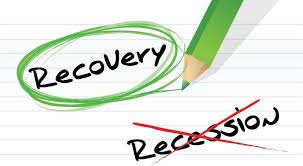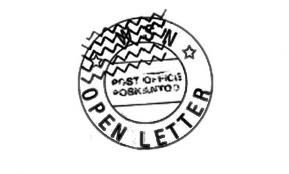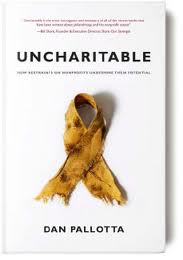Text messaging for solicitation (or stewardship) of donors
By Rose Reinert
Guest blogger
 For those of you who are new to the DonorDreams blog, I’m going chapter by chapter through Lon Safko’s book, The Social Media Bible and applying his thoughts to the non-profit sector in a blog on Monday mornings. Of course, it is Tuesday morning (because Erik just returned from his five month engagement in Texas & New Mexico and he got confused).
For those of you who are new to the DonorDreams blog, I’m going chapter by chapter through Lon Safko’s book, The Social Media Bible and applying his thoughts to the non-profit sector in a blog on Monday mornings. Of course, it is Tuesday morning (because Erik just returned from his five month engagement in Texas & New Mexico and he got confused).
Last week, we explored marketing yourself through SEM — Search Engine Marketing — and this week we will explore maximizing your message through using mobile.
Do you remember back in January 2010 when The American Red Cross received an overwhelming response with text message donations after the Haiti earthquake? Well, “overwhelming” equaled $41m! The Red Cross received 4.1 million messages valued at ten dollars each, 95% of which were from first-time donors.
Text Message Donations
Simply put, you advertise the fundraising phone number to potential donors. The donors send a text message, and 60 to 90 days later you receive the donation. Seems simple right?
There are some common frustrations that surround that simple equation, which are important to explore. Many non-profits have and are running similar campaigns as The Red Cross, but there are some large hurdles including the cost of processing.
Mobile Site Donations
As we have discussed through our journey in this blog, ensuring that your website is mobile friendly is critical. It also can provide the opportunity to raise funds. A downfall of text message donations is that there is a limit of $10. This, of course, can leave money on the table for your non-profit.
You can utilize similar methods as text message donations, but direct people to your website’s Donate Now button.
Text Message Cultivation
Beyond the usage of text messaging for the end result of raising money, you can utilize it to build your relationship with your donors to position them for larger solicitations in mind.
Send your donor a few quick messages every month (or even once a month) focused on how their contribution is making a difference. Using text messaging in this manner can keep your donors excited and engaged with your mission.
In a year-end campaign for the Humane Society, donors who periodically received stewardship messages via text contributed online with an increased response rate of 77%.
So, what are you waiting for? Let’s get texting!
I am very interested to hear your experiences (both good and bad) with utilizing text messaging for donations or engagement for your agency. Additionally . . . have you used text messaging to donate to an organization? Please share what you liked and disliked in the comment box below.


 That is it . . . I am fed up and can’t stop myself from saying something that has been on my mind for a little while now. Can non-profit organizations please stop running around and telling anyone who will listen that the economy is bad and the recession is hurting their agency?
That is it . . . I am fed up and can’t stop myself from saying something that has been on my mind for a little while now. Can non-profit organizations please stop running around and telling anyone who will listen that the economy is bad and the recession is hurting their agency? My online friend, Marc Pitman is hosting this month’s Nonprofit Blog Carnival and asks his fellow non-profit bloggers to write an open letter to executive directors in honor of President’s Day. For those of you who don’t know of Marc, he is well-known to friends and business associates as “The Fundraising Coach“. As the coach describes in his
My online friend, Marc Pitman is hosting this month’s Nonprofit Blog Carnival and asks his fellow non-profit bloggers to write an open letter to executive directors in honor of President’s Day. For those of you who don’t know of Marc, he is well-known to friends and business associates as “The Fundraising Coach“. As the coach describes in his  How does Twestival work?
How does Twestival work?
 In my humble opinion, non-profit professionals have two choices:
In my humble opinion, non-profit professionals have two choices: As I’m sure you aware by now, I like to reflect back on things that have occurred and create a plan to avoid their reoccurrence. As such, I’ve been thinking about things our field can do to be stronger.
As I’m sure you aware by now, I like to reflect back on things that have occurred and create a plan to avoid their reoccurrence. As such, I’ve been thinking about things our field can do to be stronger.


 Politics — and non-profit fundraising — make strange bed fellows. Most non-profits look for donosr and sponsors. At some point, there will be a conflict between the mission of the non-profit and the reputation (earned or unfair) of the potential sponsor. Some donors and sponsors will be better for your mission than others. A Gift Acceptance Policy can help you determine what’s best for your organization.
Politics — and non-profit fundraising — make strange bed fellows. Most non-profits look for donosr and sponsors. At some point, there will be a conflict between the mission of the non-profit and the reputation (earned or unfair) of the potential sponsor. Some donors and sponsors will be better for your mission than others. A Gift Acceptance Policy can help you determine what’s best for your organization. Of course, my brain immediately went to the possibility of a billboard with two scantily clad waitresses in low cut very tight Boy & Girls Clubs tee-shirts. (Note: Boys & Girls Clubs, among many other amazing and life changing programs, have self esteem programs for young women as well as a similar program for boys teaching them what it means to be a man.)
Of course, my brain immediately went to the possibility of a billboard with two scantily clad waitresses in low cut very tight Boy & Girls Clubs tee-shirts. (Note: Boys & Girls Clubs, among many other amazing and life changing programs, have self esteem programs for young women as well as a similar program for boys teaching them what it means to be a man.) BGCA encourages its local Club leadership to talk about such things, and Clubs across the country are better for it. Since I opened my consulting firm, I have found that this to be the exception, not the rule.
BGCA encourages its local Club leadership to talk about such things, and Clubs across the country are better for it. Since I opened my consulting firm, I have found that this to be the exception, not the rule. It happened again yesterday. A non-profit friend of mine called and we talked for an hour about their revenue model and fundraising issues. Questions included:
It happened again yesterday. A non-profit friend of mine called and we talked for an hour about their revenue model and fundraising issues. Questions included: WIIFM?—Writing a Blog
WIIFM?—Writing a Blog